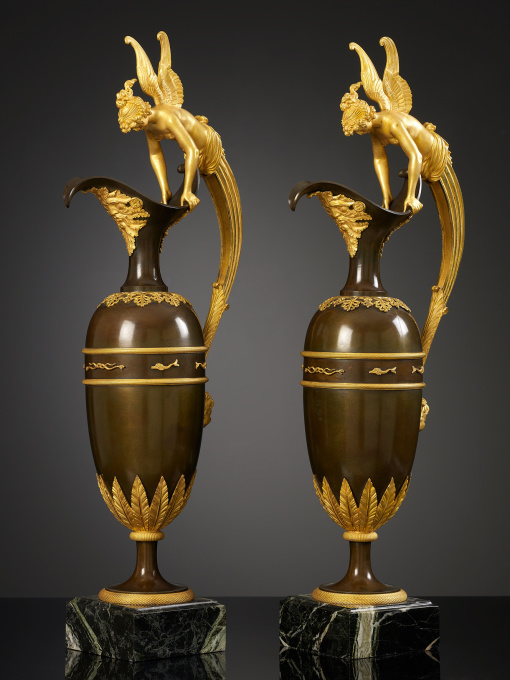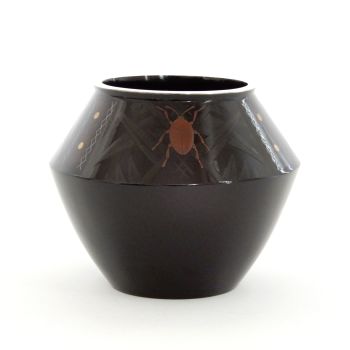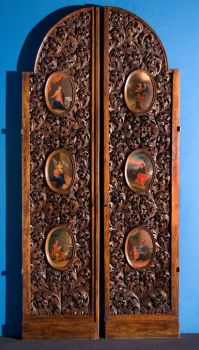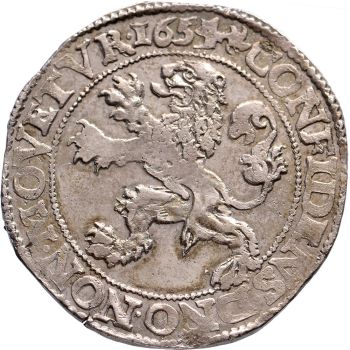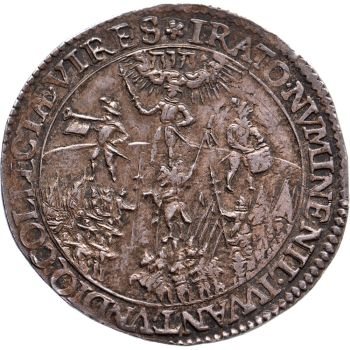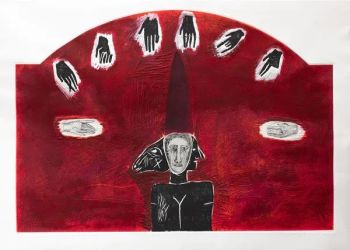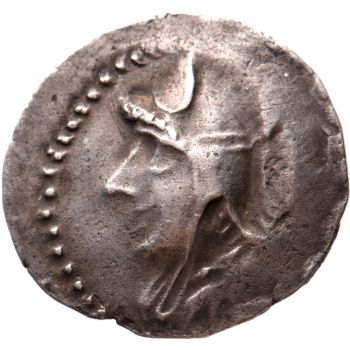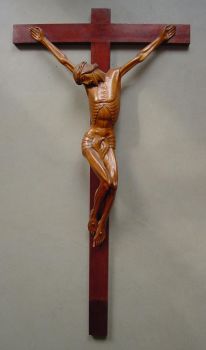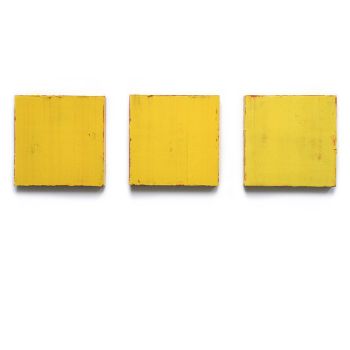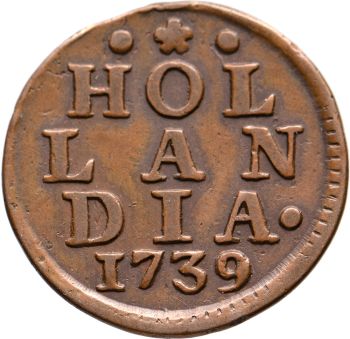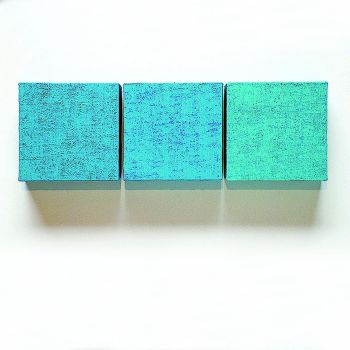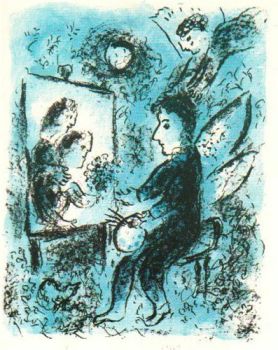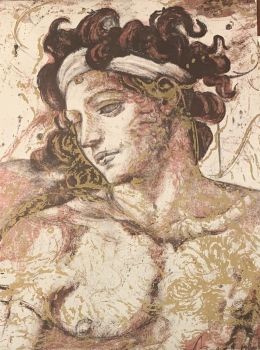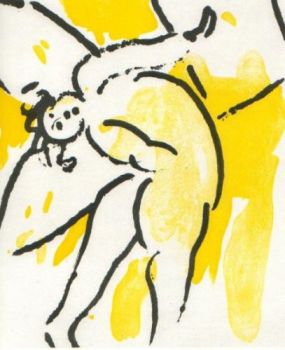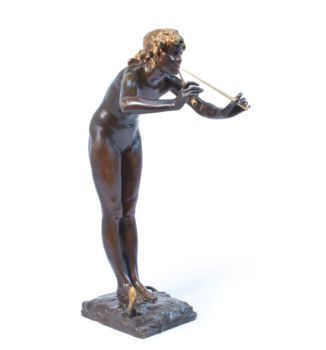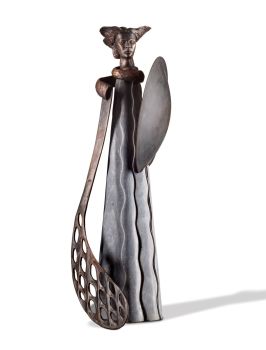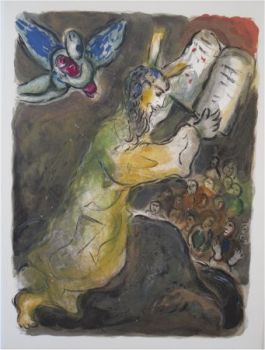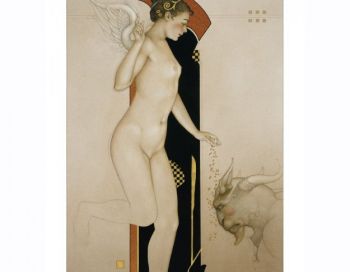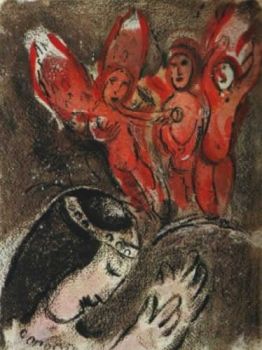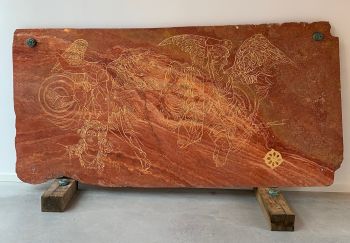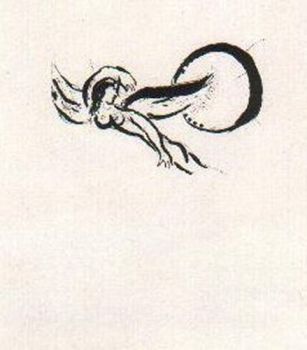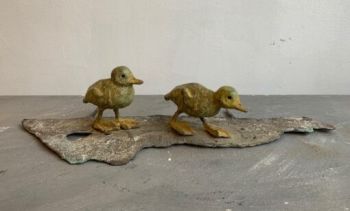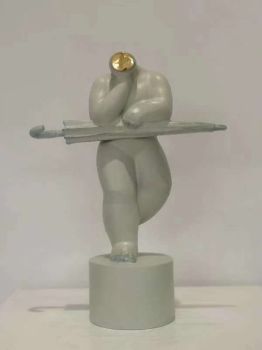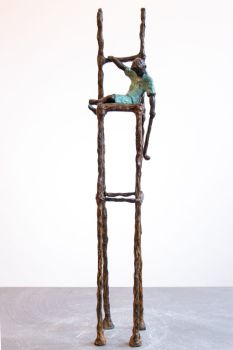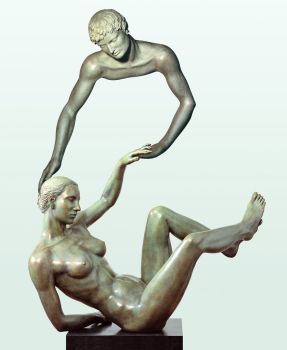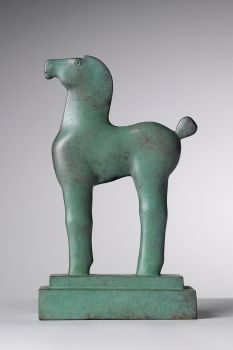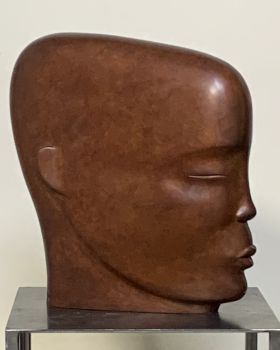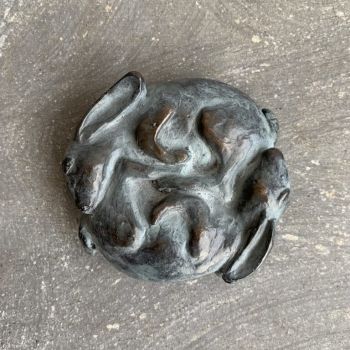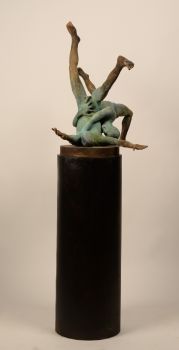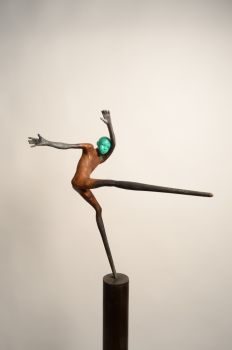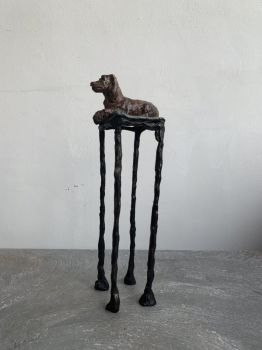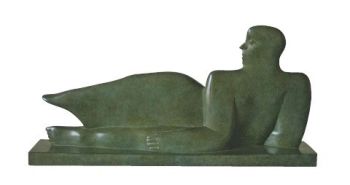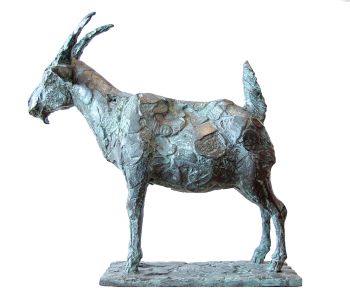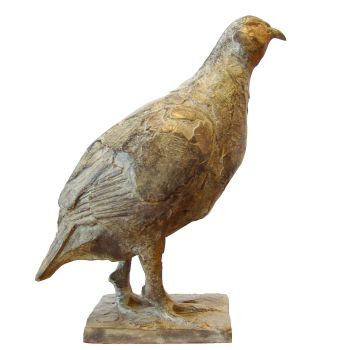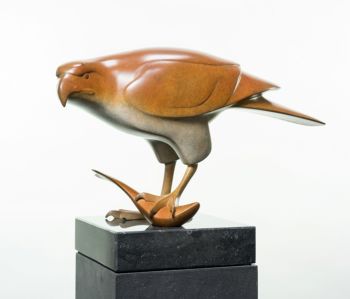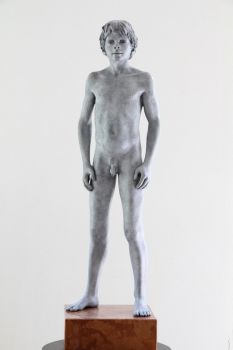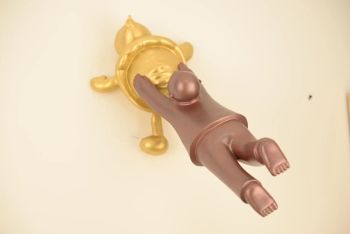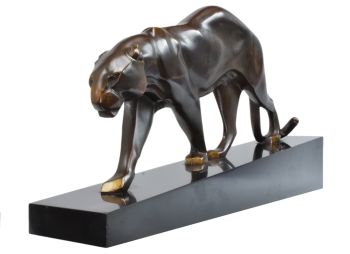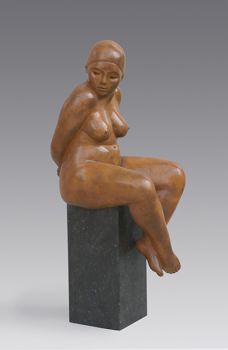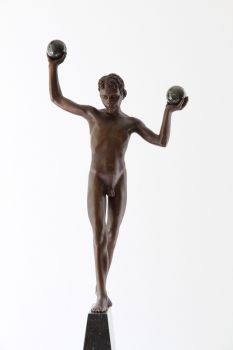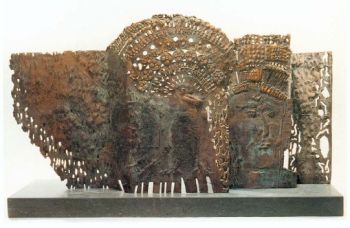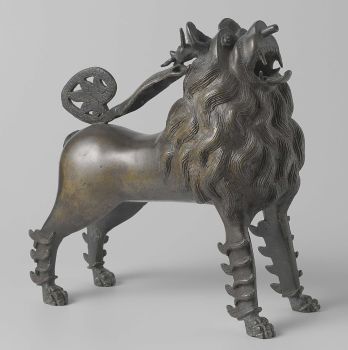Par de grandes impérios Ewers atribuídos a Claude Galle 1810
Claude Galle
BronzeMetal
61 ⨯ 22 cm
Atualmente indisponível via Gallerease
- Sobre arteA fine pair of Empire gilt and patinated bronze ewers attributed to Claude Galle of elongated baluster form mounted around the collar and base with stylized palmettes and acanthus leaves and centred around the body by a frieze of snakes and dolphins, the spout applied with a bearded male mask, the channelled and pearled scrolled handle supported on a putto mask and terminated above by a winged classical maiden clasping the rim, the whole on a spreading circular domed foot on a square Vert de Grèce marble base.
These outstanding and large ewers can be attributed to Claude Galle (1759-1815), one of the foremost bronziers and fondeur-ciseleurs of the late Louis XVI and Empire periods, whose oeuvre included a number of near identical ewers. Among them is a pair at Pavlovsk Palace and at Yusupov Palace at St. Petersburg, a pair in the Ostankino Palace, Moscow and another in the Württemberg Landesmuseum, Stuttgart. A further comparable pair, owned during the nineteenth century by the Earls of Essex at Cassiobury Park.
Among the many distinguished works made by Galle were a number of other ewers as well as urns, vases and clock cases which, as here, had classical winged maidens surmounting or forming part of the handle. Among comparable examples is a pair illustrated in "Gli Splendori del Bronzo, Mobili e Oggetti d'Arredo tra Francia e Italia 1750-1850", 2002, p. 140 no. 58 and also in Ottomeyer and Pröschel op. cit. p. 365, pl. 5.12.9. Works of this type proved particularly popular among English collectors but especially in Russia, where they were sometimes copied or inspired other luxury pieces by designers such as Andreï Voronikhin (1759-1814) and the bronzier Friedrich Bergenfeldt (1768-1822).
A leader in his field, Claude Galle was born at Villepreux near Versailles and then travelled to Paris to begin an apprenticeship under the fondeur, Pierre Foy. In 1784 Galle married Foy's daughter and on his father-in-law's death in 1788 Galle took over the workshop, which he built up into one the finest of its kind with a workforce of about 400 craftsmen. Galle promptly moved the business to Quai de la Monnaie (renamed Quai de 1'Unité) and from 1805 operated from 60 Rue Vivienne. First listed in the trade registers in 1784 he was received as a maître-fondeur in 1786 and promptly gained the first of many commissions from the Garde-Meuble de la Couronne under Jean Hauré from 1786-88. He is known to have collaborated with Pierre-Philippe Thomire, amongst others, and was responsible for the majority of bronzes d'ameublement supplied during the Empire to Château de Fontainebleau. Other Imperial commissions included the supply of numerous vases, ewers, light fittings, figural clock cases and other fine bronze furnishings for the palaces at Saint-Cloud, the Trianons, Tuileries, Compiègne, Rambouillet and a number of the Italian palaces including Monte Cavallo, Rome and Stupinigi near Turin. Yet despite numerous important commissions Galle was often in debt, partly on account of his lavish life style and also since many of his clients, such as Prince Joseph Napoleon, failed to pay him. After his death Galle's business was reopened and prospered under his son, Gérard-Jean Galle (1788-1846). His work can be found among the world's finest collections including those mentioned above as well as the Musée National de Château de Malmaison, the Musée Marmottan in Paris, the Museo de Relojes at Jerez de la Frontera, the Residenz Munich and the Victoria and Albert Museum in London.
Provenance:
ING Collection - Sobre artistaClaude Galle nasceu em Villepreux, perto de Versalhes. Ele se mudou para Paris para começar um aprendizado com o fondeur Pierre Foy. Em 1784, Galle se casou com a filha de Foy e quando o próprio Foy faleceu em 1788, foi Galle quem assumiu sua oficina e a transformou em uma das melhores de sua espécie, empregando cerca de 400 artesãos. Em 1805, Galle mudou seu negócio para Quai de la Monnaie, e operou a partir de 60 Rue Vivienne. Em 1786 ele já havia se tornado um Maître-Fondeur, e em 1786-1788 ele ganhou a primeira de muitas encomendas da Garde-Meuble de la Couronne, sob Jean Hauré. Ele é conhecido por ter colaborado com Thomire e foi responsável pela maioria dos bronzes d'ameublement fornecidos durante o Império ao Château de Fontainebleau. Suas outras encomendas imperiais incluem o fornecimento de numerosos vasos, jarras, relógios figurais, luminárias, para uma série de outros castelos franceses, bem como palácios italianos. Apesar de sua popularidade, Galle costumava ficar endividado por causa de um estilo de vida luxuoso e do fracasso de muitos de seus clientes em realmente pagá-lo. Após a morte de Galle, sua oficina foi continuada por seu filho, Gérard-Jean Galle (1788-1846). Seu trabalho pode ser encontrado entre as melhores coleções do mundo, como as do Musée National de Château de Malmaison e do Victoria and Albert Museum em Londres.
Artwork details
Categoria
Assuntos]
Estilo
Material e Técnica
Related artworks
Artista Desconhecido
Set Franse Empire Pendules / Empire Lectura penduleearly 19th
Preço em pedidoKuipers Kunst & Antiek
Artista Desconhecido
Pulseira de diamante do século 18 com entalhes de 2.000 anos1790
€ 23.000Adin Fine Antique Jewellery
 Com curadoria de
Com curadoria deDanny Bree
Artista Desconhecido
Conjunto de oito desenhos a guache1799 - 1801
Preço em pedidoRobert Schreuder Antiquair
1 - 4 / 15Artista Desconhecido
Japanese art deco lacquervase with Scarab beetle motif1920 - 1950
Preço em pedidoDille Art
Samuel Dejong
Anatomia Blue Heritage, Hercules Open2017 - 2019
Preço em pedidoVilla del Arte Galleries
 Com curadoria de
Com curadoria deGallerease Magazine
1 - 4 / 24Artista Desconhecido
A pair of angels Antwerp, 17th century, Carrara marble17th century
Preço em pedidoFrederik Muller
1 - 4 / 24- 1 - 4 / 24

